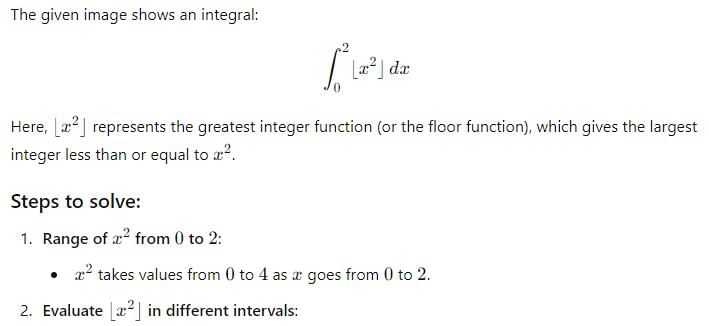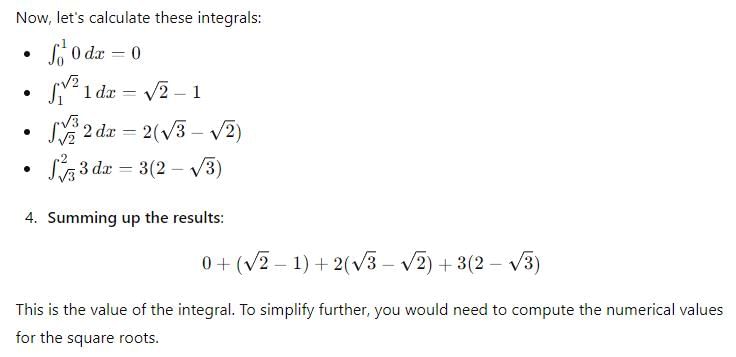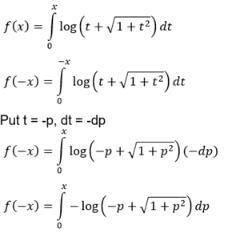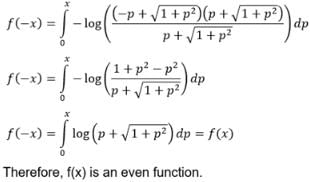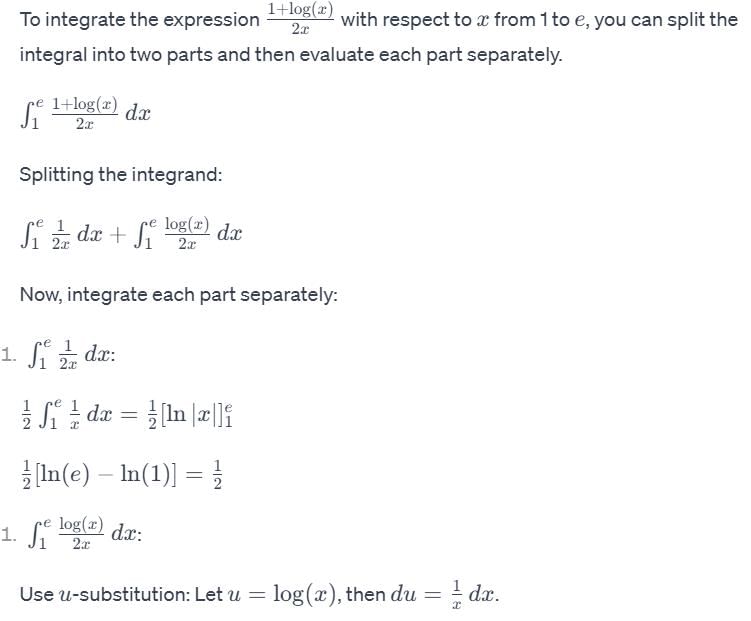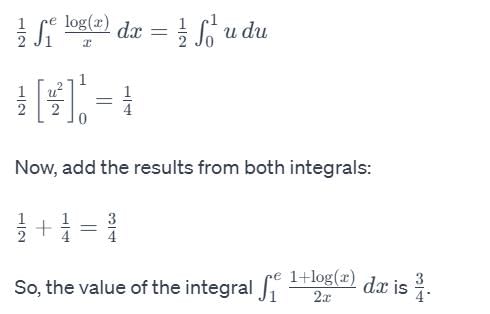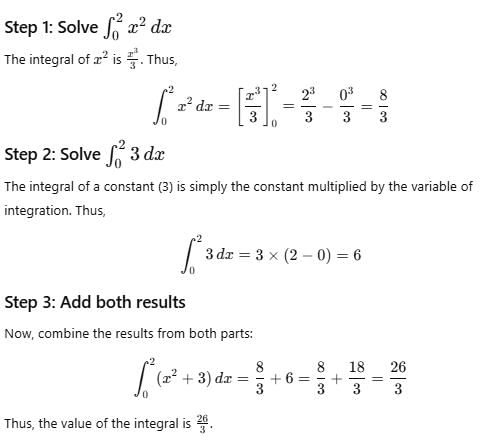Test: Integrals- 1 - JEE MCQ
Test Description
25 Questions MCQ Test - Test: Integrals- 1
Test: Integrals- 1 for JEE 2025 is part of JEE preparation. The Test: Integrals- 1 questions and answers have been prepared
according to the JEE exam syllabus.The Test: Integrals- 1 MCQs are made for JEE 2025 Exam.
Find important definitions, questions, notes, meanings, examples, exercises, MCQs and online tests for Test: Integrals- 1 below.
Solutions of Test: Integrals- 1 questions in English are available as part of our course for JEE & Test: Integrals- 1 solutions in
Hindi for JEE course.
Download more important topics, notes, lectures and mock test series for JEE Exam by signing up for free. Attempt Test: Integrals- 1 | 25 questions in 25 minutes | Mock test for JEE preparation | Free important questions MCQ to study for JEE Exam | Download free PDF with solutions
Detailed Solution for Test: Integrals- 1 - Question 1
Test: Integrals- 1 - Question 2
Find the distance travelled by a car moving with acceleration given by a(t)=Sin(t), if it moves from t = 0 sec to t = π/2 sec, and velocity of the car at t=0sec is 10 km/hr.
Detailed Solution for Test: Integrals- 1 - Question 2
Detailed Solution for Test: Integrals- 1 - Question 3
Detailed Solution for Test: Integrals- 1 - Question 4
Detailed Solution for Test: Integrals- 1 - Question 5
Detailed Solution for Test: Integrals- 1 - Question 6
Detailed Solution for Test: Integrals- 1 - Question 7
Detailed Solution for Test: Integrals- 1 - Question 8
Detailed Solution for Test: Integrals- 1 - Question 9
Detailed Solution for Test: Integrals- 1 - Question 10
Detailed Solution for Test: Integrals- 1 - Question 11
Detailed Solution for Test: Integrals- 1 - Question 12
Detailed Solution for Test: Integrals- 1 - Question 13
Detailed Solution for Test: Integrals- 1 - Question 14
Detailed Solution for Test: Integrals- 1 - Question 15
Detailed Solution for Test: Integrals- 1 - Question 16
Detailed Solution for Test: Integrals- 1 - Question 17
Detailed Solution for Test: Integrals- 1 - Question 18
Detailed Solution for Test: Integrals- 1 - Question 19
Detailed Solution for Test: Integrals- 1 - Question 20
Detailed Solution for Test: Integrals- 1 - Question 21
Detailed Solution for Test: Integrals- 1 - Question 22
Detailed Solution for Test: Integrals- 1 - Question 23
Detailed Solution for Test: Integrals- 1 - Question 24
Detailed Solution for Test: Integrals- 1 - Question 25
Information about Test: Integrals- 1 Page
In this test you can find the Exam questions for Test: Integrals- 1 solved & explained in the simplest way possible.
Besides giving Questions and answers for Test: Integrals- 1, EduRev gives you an ample number of Online tests for practice
Download as PDF



